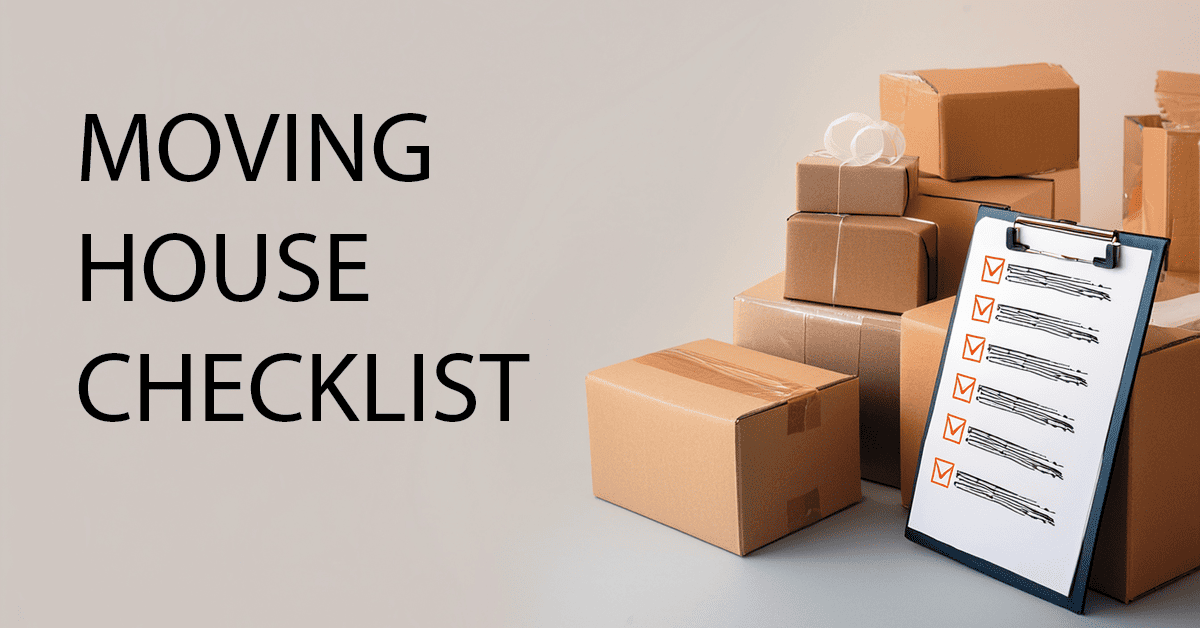
Moving house is exciting—new beginnings, fresh surroundings, and a space to make your own. But it’s also stressful, time-consuming, and full of forgotten tasks. That’s where this house moving checklist comes in.
Whether you’re upsizing, downsizing, or moving across states in Australia, this ultimate checklist for moving home will guide you step-by-step. From 8 weeks out to moving day and beyond, we’ve got every detail covered.
To make your shifting simple and quick, you can download the checklist PDF for free.
Download Now8 Weeks Before Moving – The Planning Phase
Start Your House Move List
- Create a moving house to-do list in a notebook, app, or download a printable moving house checklist for Australia.
- Decide on your moving date.
- Check your lease notice period or settlement dates.
- Create a moving folder (digital or physical) to track quotes, receipts, and paperwork.
Research and Book a Removalist
- Compare quotes from at least 3 professional removalists.
- Ask about packing services, insurance, storage, and hidden charges.
- If moving interstate, confirm timelines and delivery dates.
6 Weeks Before Moving – Declutter and Sort
Declutter Your Home
- Go room by room: keep, donate, sell, discard.
- Hold a garage sale or list items on Facebook Marketplace or Gumtree.
Start Using Pantry and Freezer Items
- Begin eating food that won’t travel well.
- Avoid bulk grocery shopping.
Update or Collect Important Documents
- Birth certificates, passports, school reports, medical and dental records.
- Scan copies and save them securely online.
4 Weeks Before Moving – Notify and Organise
Notify Change of Address
irect your mail via Australia Post. Update your address for:- Banks and cit cards
- Insurance (home, car, health)
- Subscriptions and memberships
- Government services (ATO, Centrelink, Medicare)
- Schools and universities
Organise Utilities
Book disconnection at the old home and reconnection at the new home:- Electricity
- Gas
- Water
- Internet and phone
- Pay TV
Hire or Gather Packing Supplies
- Boxes of different sizes
- Packing paper, bubble wrap
- Packing tape and scissors
- Labels or permanent markers
2 Weeks Before Moving – Pack and Finalise
Begin Packing Non-Essentials
- Start with items you don’t use daily: books, décor, seasonal clothes.
- Label boxes clearly by room and content.
- Create a priority “unpack first” box.
Organise Care for Pets and Kids
- Arrange babysitting or pet-sitting for moving day.
- Prepare pet travel crates and update microchip details.
Service Your Car (Especially for Long-Distance Moves)
Confirm Moving Day Details
- Confirm booking with removalist and cleaners.
- Arrange time off work if requi.
1 Week Before Moving – Final Prep
Pack Daily Use Items
- Keep out essentials (toiletries, chargers, minimal clothing).
- Pack a “first night” box with:
- Bedding and towels
- Snacks, kettle, mugs, tea/coffee
- Toilet paper and cleaning supplies
Defrost the Freezer
Unplug and clean fridge/freezer 48 hours before moving.Clean the House or Book Exit Cleaners
Especially important for renters—protect your bond.Dispose of Hazardous Materials
Safely dispose of paint, gas bottles, chemicals that removalists won’t carry.Create a Detailed Inventory of Your Belongings
To avoid disputes and simplify insurance claims:- Photograph high-value items.
- Make a list of the box contents for each room.
- Label boxes with priority levels (Fragile, Open First).
- Cross-check with your mover’s inventory sheet.
Moving Day – The Big Move
Early Morning Checklist
- Pack last-minute essentials.
- Turn off all appliances and switches.
- Record meter readings.
- Lock all windows and doors.
Coordinate with the Movers
- Walk them through the house.
- Highlight fragile or priority boxes.
- Provide a clear moving path.
Keep Essentials With You
- Personal ID
- Medications
- Laptop, phone, chargers
Conduct a Final Walkthrough
- Check cupboards, doors, garage.
- Ensure zero items are left behind.
After the Move – Settling In
Unpack Essentials First
Focus on kitchen, bathroom, and bedrooms.Reconnect Utilities and Internet
If not done earlier, contact providers.Re-register Your Address
Update electoral roll, driver’s licence, state registrations.Check Mail irection
Meet the Neighbours
A friendly introduction helps.Do a Safety Check
- Test smoke alarms
- Check locks
- Locate emergency exits
